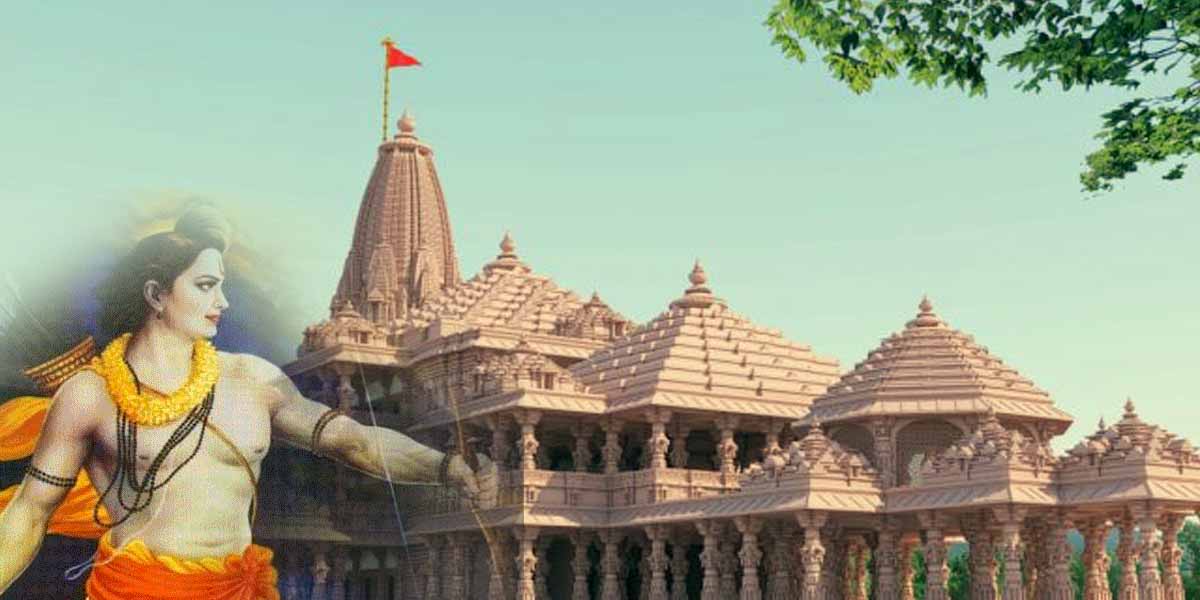Faith, Dispute, and Resolution: Ayodhya’s Ram Temple in the Spotlight
Faith, Dispute, and Resolution: Ayodhya’s Ram Temple in the Spotlight.

Image Source: nayataaza.com
Faith, Dispute, and Resolution: Ayodhya’s Ram Temple in the Spotlight.
The Ayodhya Ram Temple: A Historical Narrative
The history of the Ayodhya Ram Temple is deeply rooted in India’s cultural and religious heritage, with its significance extending across centuries. Situated in Ayodhya, Uttar Pradesh, the site is believed by Hindus to be the birthplace of Lord Rama, a revered figure in Hinduism. The temple’s history is marked by a blend of religious beliefs, archaeological findings, and a protracted legal and political dispute.
Ancient Significance:
Ayodhya, featured in ancient Hindu scriptures like the Ramayana, Mahabharata, and Puranas, is revered as one of the seven holiest cities in Hinduism. The Ramayana, attributed to the sage Valmiki, narrates the life and adventures of Lord Rama, his wife Sita, and his devoted companion Hanuman.
Construction of Babri Masjid:
The historical controversy surrounding the site gained prominence during the medieval period. In the early 16th century, the Babri Masjid, an Indo-Islamic structure, was constructed by Mir Baqi, a commander of Mughal emperor Babur. This mosque was built on the site identified by Hindus as Ram Janmabhoomi, the birthplace of Lord Rama.
Legal and Political Disputes:
The Babri Masjid-Ram Janmabhoomi dispute became a focal point in the 19th and 20th centuries. The first legal conflict arose in 1856 when the British administration erected a barrier to separate the inner and outer courtyards of the site.
In the 20th century, the dispute intensified. In 1949, idols of Lord Rama were placed inside the mosque, leading to the locking of its gates. The 1980s witnessed heightened tensions as Hindu organizations, including the Vishva Hindu Parishad (VHP) and the Rashtriya Swayamsevak Sangh (RSS), advocated for the construction of a Ram temple.
Demolition of Babri Masjid:
The dispute reached a critical juncture on December 6, 1992, when a large mob, including Hindu activists, demolished the Babri Masjid. This event triggered communal tensions and initiated a series of legal battles.
Legal Proceedings:
The legal battle endured for years, traversing various courts, including the Allahabad High Court. In 2010, the court ruled for the division of the disputed land among three parties: the Sunni Waqf Board, the Nirmohi Akhara, and the deity Ram Lalla Virajman.
Supreme Court Verdict (2019):
In a landmark judgment on November 9, 2019, the Supreme Court of India brought closure to the prolonged dispute. The court awarded the entire disputed land to the Hindus, permitting the construction of a Ram temple. Simultaneously, the court directed the government to provide an alternate five-acre plot to the Sunni Waqf Board for the construction of a mosque.
Construction of the Ram Temple:
Following the Supreme Court verdict, the construction of the Ram Temple commenced, symbolizing the fulfillment of a long-standing aspiration and representing the cultural and religious heritage associated with Lord Rama.
Cultural and Religious Symbolism:
The construction of the Ram Temple holds immense cultural and religious significance for Hindus, symbolizing national integration and a deep-rooted connection to their heritage. It is expected to become a pilgrimage site and a cultural landmark.
Global Reaction:
The construction of the Ram Temple has garnered global attention, with leaders and organizations worldwide acknowledging its cultural and religious significance. The event has sparked discussions on religious tolerance, pluralism, and the role of heritage in contemporary society.
The history of the Ayodhya Ram Temple is a complex tapestry, weaving together ancient beliefs, medieval constructions, legal disputes, and contemporary aspirations. The construction of the temple stands as a landmark in India’s history, reflecting the intricate interplay of religion, culture, law, and politics.
Faith, Dispute, and Resolution: Ayodhya’s Ram Temple in the Spotlight.
Author: Harendra Kukna

Leave a comment